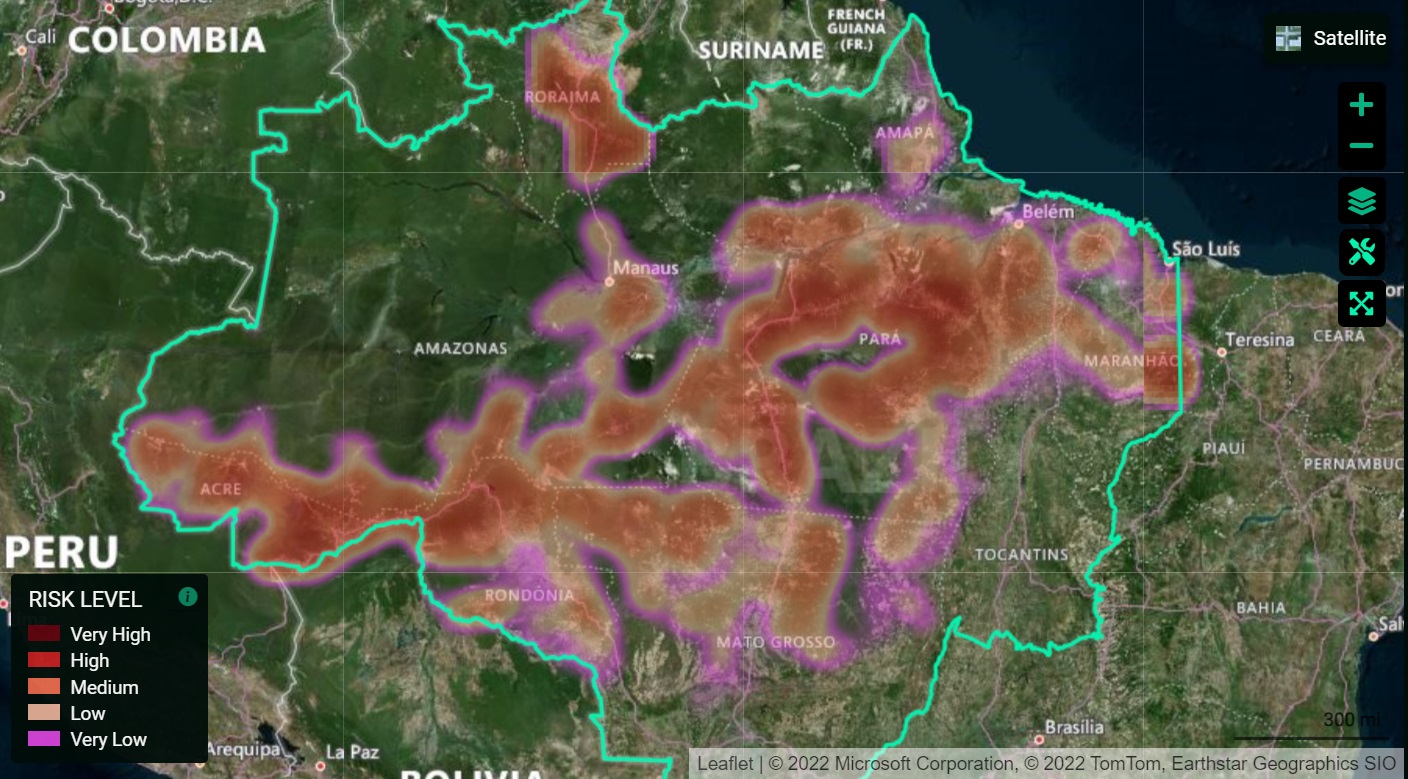Called PrevisIA, the tool shows the forest areas under the greatest threat of deforestation to assist in preventive actions

If more effective measures to combat deforestation in the Brazilian Amazon are not taken, the region could have, in 2022, the largest felled forest area in the last 16 years. Estimates from the artificial intelligence platform PrevisIA point to 15,391 km² at risk of devastation.
The risk calculation takes into account the so-called “deforestation calendar”, which, due to the rainy season in the Amazon, runs from August of one year to July of the following year. In other words: according to the tool, these more than 15 thousand km² can be reached between August 2021 and July 2022.
If this happens, deforestation will be the largest since 2006, according to the National Institute for Space Research (Inpe, in Portuguese). In addition, it will be 16% higher than the devastation recorded by the institution in the previous calendar, from August 2020 to July 2021, which was 13,235 km². This comparison is possible because PrevisIA uses Inpe’s deforestation historical series (Prodes) as one of the variables in the risk model.
Researcher responsible for the platform, Carlos Souza Jr., from the Amazon Institute of People and the Environment (Imazon), points out that 2022 is an election year, when, in general, inspections tend to reduce. In the last three election years, for example, there was an increase in deforestation.
“For this reason, it is important that public control agencies, such as the federal and state prosecution services, also act to protect the Amazon. The state governments, in turn, play an important role in controlling the devastation, especially in cases of omission by the federal government”, explains Souza Jr.
In the state of Pará, which deforests the most in the Amazon, for example, the Public Prosecution is conducting a pilot environmental protection project using PrevisIA. The goal is to identify and implement actions to prevent deforestation.
Launched last year by Imazon, Microsoft and Vale (through Fundo Vale), PrevisIA is a tool that uses artificial intelligence to predict the areas at greatest risk of deforestation in the Amazon. This risk is calculated considering various indicators related to forest clearing, like legal and illegal roads, distance from protected areas, topography, land cover, rivers, urban infrastructure and socioeconomic data.
After the analyses, the results are made accessible on the website previsia.org, where there is a map indicating the different risk zones in the Amazon. “The PrevisIA map and statistics can help governments direct deforestation prevention actions to areas at major threat”, adds Souza Jr.
71% of predicted deforestation can still be avoided
From August 2021 to January 2022, according to the monthly monitoring by Imazon, 4,514 km² were destroyed, corresponding to 29% of the deforestation predicted in PrevisIA until July this year. In other words, it is still possible to prevent the destruction of the other 10,887 km² at risk of deforestation on the platform, 71% of the total.
Deforestation risk reaches 90% of protected areas
Regarding protected areas in the Amazon, PrevisIA shows that 725 indigenous lands, conservation units and quilombos are at risk of deforestation, which represents 90% of the total (803 territories). Of this total, 24% of the areas are at high or very high risk of forest clearing.
In the analysis by category, PrevisIA indicates that conservation units have the highest percentage of territories at high or very high risk of deforestation, which is 37%. Next are indigenous lands, with 19%, and quilombola territories, with 8%. It is these areas at greatest risk that should be prioritized in protection measures.
2022 starts with a 33% increase in deforestation
The pace of increasing deforestation recorded in recent years in the Amazon continued in the first month of 2022. According to Imazon’s data, 261 km² of forest were cut down in January, 33% more than detected in the same month in 2021. This was the biggest deforested area in January since 2016.
